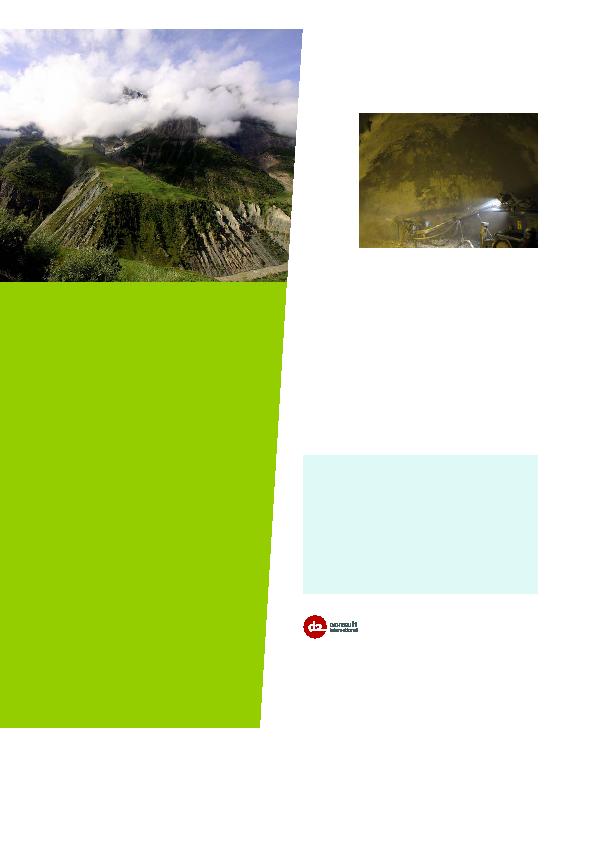
of water, a successively increasing overburden, and limited access
roads and logistics. D2 has progressed with the engineering,
but needs to constantly review the design and adapt it to the
changing situations.
Method (NATM) from two portals. A single tube, double lane
structure in the shape of a horsehoe, the tunnel features a
fireproof emergency escape passage below the pavement. People
driving in that part of India will be happy to know that road
length will be reduced by 46 km upon the tunnel's completion.
Slopes in the young Himalayan mountains are steep
and covered loosely with soil of varying thickness.
Constant landslides, debris flows and winter
avalanches all affect Rohtang Tunnel's project area.
They cause blockage to the road, muck-dumping areas
and tunnel portals.
Winters in Manali are extremely cold, effectively
closing Rohtang for at least four month a year.
Temperatures drop below zero in the months
between September and June, and minimum
temperatures can reach -20 °C to -25 °C.
Heavily disturbed rocks with joints and cracks lie
along the Rohtang Tunnel alignment because
the region is still in the process of uplifting.
Several fault zones are also present like the
Seri Nalla Fault.
both portals
specializes in modern infrastructure, automated tunneling
and complex lining systems. The firm is renowned for its
innovation and groundbreaking problem solutions.
D2 has its roots in applied research carried out on behalf
of the Austrian Construction Industry.